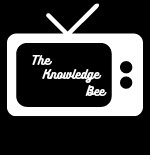✅ Digital signature
✅ Electronic Governance
✅ Attribution acknowledgement and dispatch of electronic records
They are used to verify the authenticity of the message and claim the identity of the sender, as well as to verify the integrity of the message. A message with the sender’s private key is encrypted to generate a signature. The message is then sent to the destination with the signature. The recipient decrypts the signature using the sender’s public key and if the result matches the copy of the message received, the recipient can ensure that the message was sent by the claimed originator.
A digital signature works like a written signature. The recipient of the data, such as an email message, can also verify the signed data and the data has not been modified since it was signed. To digitally sign a document, a user combines its private key and document and performs a count on it to create a unique number called a digital signature.
Electronic Governance
Electronic Governance refers to the use of information Technology in the functioning of government Machinery. Use of Information Technology in Government Functioning
Can bring transparency and promptness. It involves electronic filing of document departments and agencies , creating a network of e-services and making services through online.
The use of information technology in the work of government machinery is referred to as electronic governance. The use of information technology in government work has the potential to increase transparency and speed.. This includes electronic filing of document departments and agencies, networking of e-services and online services. From September 16, digital signatures have been made mandatory for electronic filing companies. This will allow companies to enter any documents in electronic form and pay fees through internet banking and credit / debit cards. Given the importance of e-governance, the Information Technology Act 2000 legalizes the legal identification of electronic records, digital signatures and electronic transactions with government officials and agencies.
Attribution , acknowledgement and dispatch of electronic records :
Attribution of electronic records
According to Section 11 of the IT Act, an electronic record will be attributed to the creator, if it was sent by the creator himself, or to a person who has a start with reference to this electronic record. Had the option to work on behalf of, or through an information system that is programmed by or by the creator to work automatically.
Acknowledgement of receipt of Electronic Records
Section 12 of the IT Act provides that where the creator has not agreed with the letter-writer that the receipt of the electronic record must be acknowledged in a particular form or in a particular way, the acknowledgment may be addressed by address, automatic or any other Can be given through communication. Otherwise, or any conduct of the letter, it is sufficient to inform the creator that the electronic record has been received.
Where the originator has stipulates that the electronic record will only be subject to receipt of acknowledgment of such electronic record, then unless recognized, the electronic record will never be deemed to have been sent by the originator.Within a specified time or agreed upon, or if no time has been specified or agreed upon within a reasonable time, the originator may give notice to the correspondent that no acknowledgement has not been received and there is a reasonable time to explain the acknowledgement . It should be received by him and if no acknowledgement is received within the said time limit, he should treat the electronic record as if it had never been sent after giving notice to the addressee.
